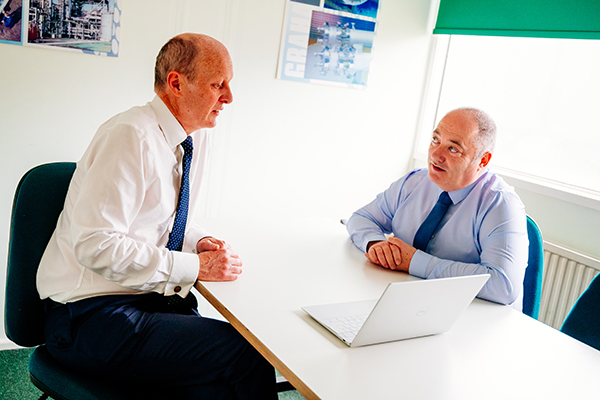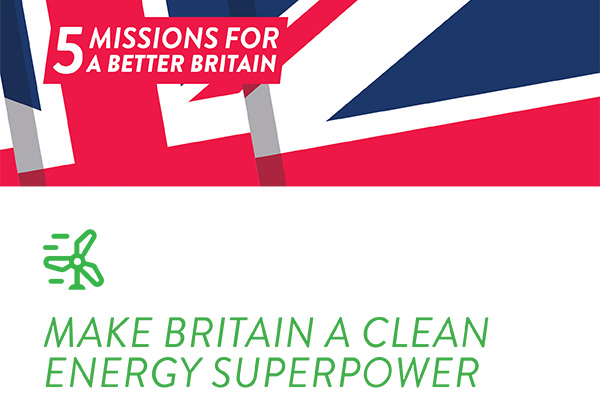As more businesses prepare to restart operations under very different working conditions, the nuclear industry’s established safety culture could provide a model for other sectors.
Nuclear AMRC industrial advisor Huw Jenkins, who helps companies in South Wales and the West Midlands become Fit For Nuclear, introduces the essential attitudes and behaviours for a safe return to work.
This month’s VE day anniversary reminded us how the British can be at their best in adversity, working together to defeat a common foe. In the current Covid-19 crisis, we can be proud of the selflessness of our health and care workers, and the kind acts of volunteers helping out those less fortunate.
The British instinctively dislike being told what to do, being generally more amenable to reasoned polite request. “Policing by consent” has been the basis of our approach since the 19th century, and there’s been widespread opprobrium for heavy-handed applications of lockdown law by some officers.
The public also gives short shrift to figures of authority setting a “do as I say, not as I do” example, as several politicians and advisors have recently been reminded.
So you’d expect British workers to embrace a culture that works by consent – a culture that is characterised by leaders setting an example, and individuals accepting personal responsibility.
That is the basis of nuclear safety culture.
This safety culture applies to every business working in the nuclear supply chain, not just those managing radioactive or fissile materials. Any seemingly minor quality issue in the supply chain has the potential to become a safety problem for an operating reactor or waste store, maybe decades into the future.
Many of the companies we help through the Fit For Nuclear programme say that upgrading their safety culture is one of the most valuable improvements they make, bringing business benefits that go well beyond their work for the nuclear sector.
Nuclear safety culture has eight internationally recognised characteristics, which I’ve listed below, along with some questions to ask about how they can be applied within a business. Not all will be applicable to every sector, but the essential attitudes and behaviours can help save lives in manufacturing, construction and beyond.
How well does your company culture match up?
1. Everyone is personally responsible for safety.
- Do all individual employees actively participate in pre-job briefings? Do they understand the objective of the work they do, and their role in achieving it safely?
- Are staff open to performance feedback?
- Do they observe and coach colleagues, especially when behaviours fall short of expected standards?
- Is everyone committed to improving themselves, the way they work and the working environment?
2. Leaders demonstrate their commitment to safety.
- Do the senior leadership team communicate frequently, through a variety of channels, to reinforce the understanding that safety is the business’s over-riding priority?
- Are senior managers leading advocates of safety, demonstrating commitment in both word and action? Do they walk the talk when resolving safety or quality issues that appear in conflict with production requirements?
- Do they encourage individual employees to challenge unsafe behaviour and conditions?
- Do they support those who stop operational activities for safety reasons?
3. Trust permeates the organisation.
- Does the business regard its employees, and their professional capability and experience, as its most valuable asset?
- Is everyone treated with dignity and respect?
- Do leaders respond to questions openly, sharing important information in an open, honest and timely manner?
- Does everyone treat decision-makers with respect, even if they might disagree?
4. Decision-making reflects the safety-first approach.
- Is safety-related decision-making systematic, rigorous and thorough? Is it delegated to the correct individual at the lowest appropriate level?
- Do individuals understand expectations to place plant, equipment and work in a safe condition, when faced with unplanned or uncertain conditions?
5. Nuclear technology is recognised as special and unique. (This one is really only for companies in the nuclear supply chain, although every business should understand the specific requirements of the industry they work in.)
- Are the special characteristics of nuclear technology understood and taken into account?
- Is work on safety-critical equipment or components for nuclear plant identified as such?
6. A questioning attitude is cultivated.
- Do leaders question assumptions, decisions and risk assessments that don’t appear to be sufficiently rigorous?
- Do they ensure specific contingency actions are discussed and understood during pre-job briefings?
- Do individual employees challenge assumptions and guidance, and offer opposing views when they think something isn’t correct?
- Do they have the integrity and confidence of leadership support to stop work when assumptions and guidance cannot be validated?
7. Organisational learning is embraced.
- Are opportunities to learn sought out and implemented? Do these routinely include ways of ensuring safety?
- Do you conduct objective, self-critical reviews and assessments of your work processes and procedures?
- Are there processes in place to learn from other organisations, and so continuously improve knowledge, skills and safety performance?
8. Safety undergoes constant examination.
- Does the senior leadership team use a variety of monitoring tools to regularly monitor the business’s safety culture?
- Do these include feedback from employee surveys, external independent assessment/audits or internal review/audits?
Ultimately, the key to safety culture is shared responsibility. While it’s always the legal responsibility of the employer to provide a safe working environment, including all necessary PPE, everyone from the boardroom to the shopfloor needs to take personal responsibility for protecting the health and safety of themselves and their colleagues.






